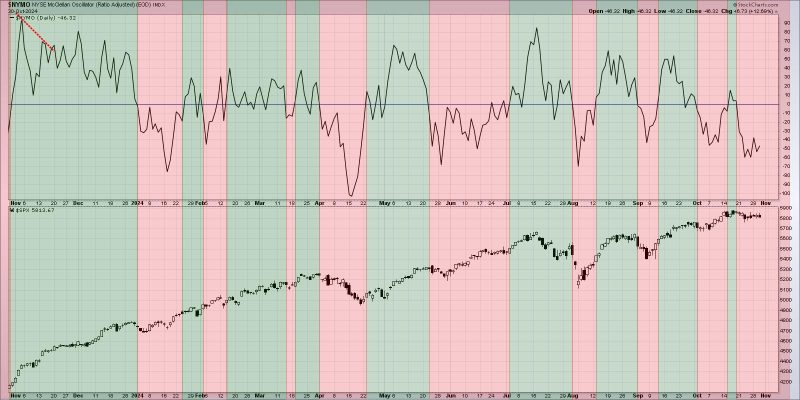The concept of breadth divergences – a discrepancy between the performance of an overall market index and the performance of a broader group of stocks within that index – has captivated the attention of many investors and analysts as they seek to identify potential shifts in market trends. In recent times, the discussion around breadth divergences has been on the rise, with many speculating about whether these divergences could signal the end of the current bull market.
To better understand the potential implications of breadth divergences on the stock market, it is crucial to delve into the factors that underpin this phenomenon. While a bull market is typically characterized by broad participation across various industry sectors and individual stocks, a lack of uniformity in stock performance could suggest underlying weaknesses in the market. In such instances, some stocks may be driving the market higher while others lag behind, indicating a loss of momentum or investor confidence in certain segments of the market.
One of the key indicators that investors often look to for clues about market breadth is the advance-decline line, which tracks the number of advancing stocks versus declining stocks on any given day. A strong advance-decline line suggests widespread participation in the market rally, while a weakening line could signal that the market’s upside potential may be limited.
Another important metric that investors use to gauge market breadth is sector rotation. When different sectors take turns leading the market higher, it can reflect a healthy rotation of capital and broad-based strength. However, if only a few sectors are driving the market gains while others underperform, it could indicate a lack of sustainability in the market rally.
The occurrence of breadth divergences in the stock market can potentially have significant implications for investors and traders alike. While some view divergences as a warning sign of an impending market correction or reversal, others believe that they are simply a normal part of market fluctuations and may not always translate into sustained downturns.
It is important for market participants to exercise caution and consider a variety of factors in conjunction with breadth divergences when making investment decisions. While they can provide valuable insights into market breadth and potential risks, relying solely on divergences to time the market or make drastic portfolio adjustments may not always yield the desired outcomes.
In conclusion, breadth divergences can serve as a useful tool for investors to assess the overall health and breadth of the stock market. While they may offer valuable clues about potential shifts in market trends, it is essential to interpret them within the context of broader market dynamics and to use them in conjunction with other fundamental and technical analysis tools. By staying informed and remaining vigilant, investors can navigate market uncertainties with greater confidence and make more informed investment decisions.

